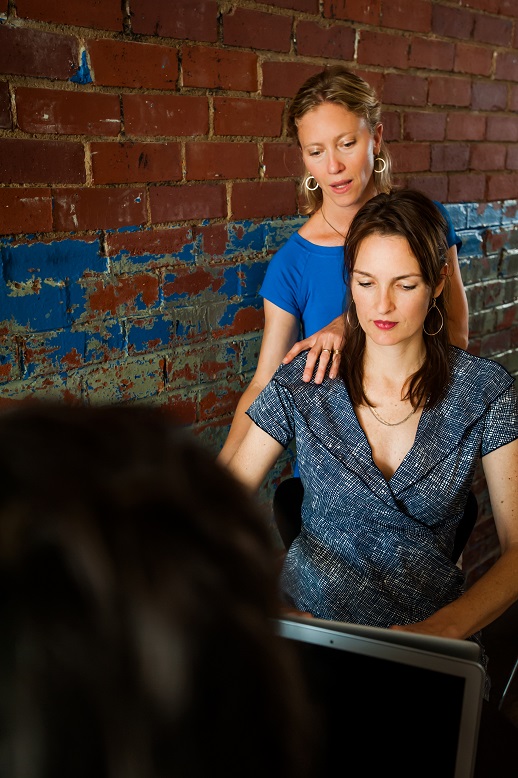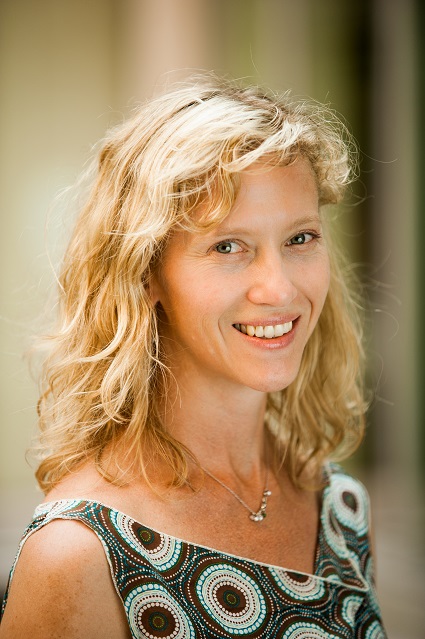R ecently, I was watching television with my son and an infomercial came on and said something like this: It’s not how you sit, it’s the cushion you sit on that causes back pain.
ecently, I was watching television with my son and an infomercial came on and said something like this: It’s not how you sit, it’s the cushion you sit on that causes back pain.
Oh dear – even my 15 year old son knew that wasn’t true. It’s not how we sit? As an Alexander Technique Teacher with over 20 years paying attention to how I sit, no matter the chair or quality of the cushion I’m sitting on, I was pretty bummed out – in part because I bet that manufacturer is going to sell a lot of cushions! Finally, the cushion that prevents back pain!
Alexander Technique’s main premise is the notion that “how” is where it’s at! How you move, how you live, how you respond to stimulus, how you exist in relationship to your environment. The cushion cannot take the place of awareness.
How you practice Pilates or other movement forms affects how well you perform. And how well you perform affects your outcome.
Denise Posnak of MyBOD Wellness was one of my first Pilates teachers. We did a weekly exchange – Pilates for Alexander Technique. Those sessions were fantastic because we found what we had in common as teachers and students. We encouraged each other to apply our thinking to our actions. Alexander Technique certainly helped me part with some habits of pushing and straining in the name of “working out” – yet even as I began to learn Pilates with Denise – she had to remind me to bring awareness to the practice of this particular form. There’s something about working out that kicked my pushing habits into gear.
That’s the thing about our habits. Different environments and stimuli set off these unconscious habits and it often takes an outside eye to point them out to us. So Denise and I did this for each other for a few years. It’s all about HOW we practice. I’m at the computer right now – asking myself the same questions as I would if I were on the mat, if I were in the midst of the hundred, if I were climbing a mountain, if I were stuck in rush hour traffic. What do I need for this moment? Am I doing more than I need to in order to sit here, typing, thinking, listening to my son play drums in the basement?
When Denise asked me to draw my navel towards my spine, could I simultaneously allow the musculature around my neck and throat to remain free? Can my forehead stay relaxed? Can I wiggle my toes? Am I doing more than I need to in order to draw my navel towards my spine?
Adding these questions in to a physical practice leads to results that often surprise people. One of my online ATFit™ students recently gave this testimonial: I am always surprised at the end of ATFit™ sessions by how such a gentle series of movements leads to so much more openness, fluidity and well-being. Alexander Technique is the perfect complement to my Pilates sessions with MyBOD™. I have had musculoskeletal pain since menopause. Thanks to MyBOD,™ I have a very personalized exercise routine that fits conveniently into my schedule, and I feel less pain, more strength and more encouraged and reconnected to my body every day. My ATFit™ sessions with Julie are invaluable.
Here’s a simple mental exercise to bring with you next time you practice or work out:
Start with doing nothing.
Lie on the floor and stop doing. If your muscles are still engaged, invite them to disengage. Let your weight be fully supported by the floor. Eyes stay open. Knees are bent. Feet are a bit wider than hip distance apart. Hands are on your abdomen. Are you resisting the support that the ground offers? Stay present. Stay here. My teacher, Holly, used to tell me – “you don’t need to go away to feel,” – as she’d watch my eyes glaze over as I tried to come up with “what I was feeling.”
Be here.
Now take yourself through some simple range of motion movements – lifting the arms overhead and to the floor – up and down – observe whether or not you tighten in your neck, your glutes, your jaw, your hips. You might be surprised. Here’s that question again – what do I need for this moment? Am I doing more than I need to in order to raise my arms? You have the support of the floor, so you don’t have to worry about falling.
Be willing to let the arms back down and start again. This isn’t about reps. It’s about quality, efficiency and ease.
At the heart of my work is this question.
What do I need for this moment? If I want to grip and push and pull and tighten – I can. And sometimes I do. But I don’t need to and I know that.
Years of study and now teaching the Alexander Technique gives me a way of applying awareness, to any moment that I choose. If I’m going to be sitting at my computer for any length of time, I will likely opt to pay attention to how I am sitting or standing, as well as the distance that I maintain from the computer. In the midst of that, I can notice whether or not I am holding excess tension in my body. If I choose not to pay attention or notice, I might succumb to some old habits, which will leave me achy and tired – thus cranky. For the sake of avoiding cranky – it’s worth these miniscule moments of time that it takes to apply awareness to how I’m performing the activity of being at my computer.
More than once, I have heard a student express that they seriously do not have time to “check in” to how they’re doing. Deadlines and schedules and interruptions abound – so don’t mess with awareness! Ok – that’s a choice – and I encourage them to view this as a choice they are making.
I believe it’s worth mentioning the whole computer/work thing here in this Pilates Journal because it’s more likely than not that the readers aren’t practicing Pilates all day – they are also spending significant hours on their computers.
We can apply these ideas from the Alexander Technique in any activity. Awareness is our point of entry. When you know what you’re doing and how you’re doing it, you are making room for your potential to grow.
Julie Rothschild, Professional Dancer, Certified Personal Trainer and Certified Alexander Technique Teacher has been in the business of studying movement and efficiency for 20+ years. Four knee surgeries by the time she was 25 meant either leaving her career as a dancer or addressing the postural and movement habits that were sideswiping her passion. She completed her 1600 hour Alexander Technique Training in 2007 and has been presenting workshops around the world ever since. She created ATFit™ in order to offer her clients a more easeful approach to fitness. ATFit™ sessions with Julie are available online www.mybodwellness.com.
Learn more about Julie at www.alexandertechniqueboulder.com

